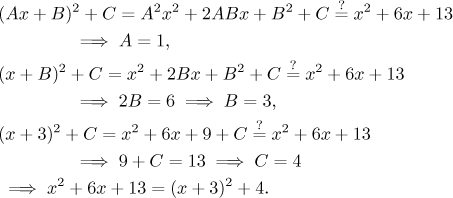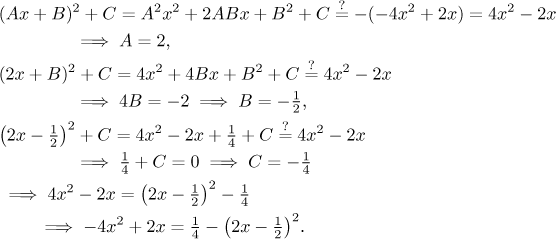Completing a square in a quadratic expression
The problem is simple: Given a quadratic expression
ax2 + bx + c,
we want to rewrite it into the form
(Ax + B)2 + C.
We use the knowledge of elementary algebra, namely we know that
(Ax + B)2 = A2x2 + 2Ax + B2.
We will try to fit this to the given quadratic expression and it the only
reasonable way is to start from the higest power.
If we want A2x2
to be the same as ax2, then there are
two cases. If a is negative, then obviously this cannot be done and
we leave it as a special case, see below. Otherwise we choose for A
the square root of a. We get the following:

Now we need to make the linear factor fit, which gives us the equation

Now we have this:

The powers of x all fit and it remains to choose C in such a
way that also the constants are the same on the left and on the right, so

A simple example will explain it best. We will complete the square in
x2 + 6x + 13.

Case a < 0: Here we have to complete
the square into the form
C − (Ax + B)2.
We could derive a procedure for it, but it is much easier to simply complete
square in minus the given expression according to the algorithm above, and
then take the answer with minus.
As an example we will complete the square in
−4x2 + 2x.



![]()

![]()

